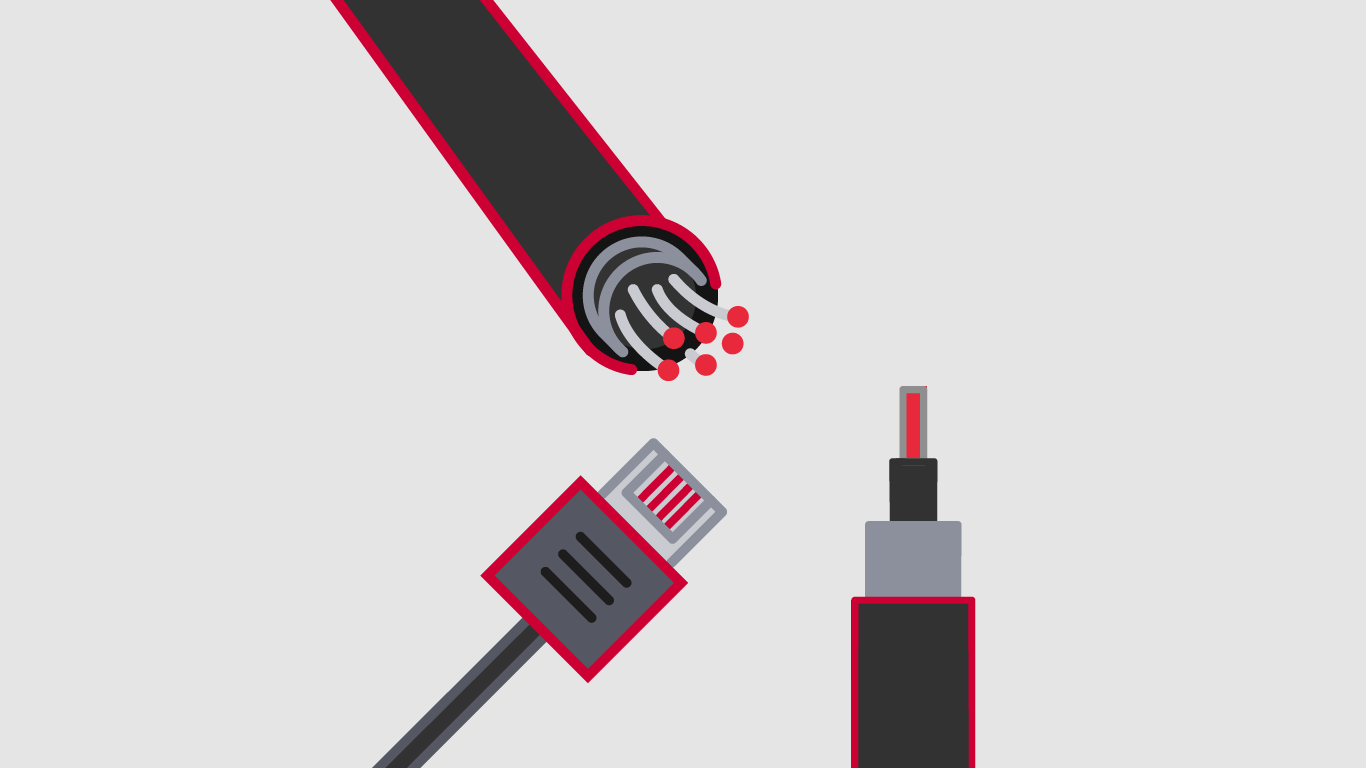When it comes to your business, selecting the wrong internet connection can have a profound impact on your productivity, and even your bottom line. Balancing the task between choosing the fastest, most reliable option, at the best price can be challenging. There are key differences between fiber, cable, and DSL, which we’ll cover in this article, so you can choose with confidence.
Fiber
Fiber offers many advantages and is the fastest broadband technology. In a nutshell, fiber works by sending pulses of light through an optical fiber, as thin as a single hair. This method offers significantly faster speeds than traditional cable or DSL because of fiber’s unique ability to move very large amounts of data over great distances.
In addition, fiber-optics utilizes light and glass to transmit data, rather than electricity and metal cables. Because of this, fiber is immune to the electromagnetic interference that occasionally causes issues with cable and DSL.
The one major con to fiber is that it’s not available in every area.
Cable (COAX)
Cable internet utilizes the cable television infrastructure for data transmission. Cable internet is very popular because of the abundance of existing cable lines throughout most areas of the country. Cable requires a modem and professional installation.
Cable internet is often a smart choice for businesses because it is widely available from a number of providers, and offers greater speeds than DSL.
DSL
DSL (Digital Subscriber Line) uses the existing telephone infrastructure to deliver internet access. DSL is slower than cable and fiber, but is usually sufficient for most home users, and is generally more affordable. One major con: the strength of your signal can be weakened, depending on the distance of your location in relation to your provider.
Speed & Reliability
When it comes to speed and reliability, it really comes down to cable and fiber, and fiber offers some clear advantages over cable in this respect. With cable, you share bandwidth speed with other users around you. Because of this, you can experience slower download speeds during times of heavy usage. Fiber is delivered to your business on a dedicated line, providing more consistent speeds than cable.
Cable download speeds range from 20 to 100 megabits per second (Mbps) and fiber download speeds range from 150 Mbps up to 1 Gbps. As you can see, there is quite a jump in speed. If your team relies heavily on sending, downloading, uploading and streaming files; fiber guarantees enough bandwidth for everyone.
In terms of reliability, fiber is not subject to electromagnetic interference. In addition, your fiber internet is less likely to be interrupted during power outages, your computers are less likely to sustain damage from lightning, and fiber can withstand drastic temperature fluctuations.
That being said, cable is considered to be very reliable and a good option for businesses. There are, however, areas that experience more frequent outages or interruptions; causing businesses that depend on the internet to effectively grind to a halt.
Price
The price for cable, fiber, and DSL can vary greatly depending on speed, location, and provider. DSL is the most affordable type of internet, however, it is not sufficient for many business users. Cable is generally cheaper than fiber, but the price gap between cable and fiber is shrinking as more fiber lines are added and older copper systems have to be maintained. If the price is your only concern, cable internet is a clear choice.
Availability
Cable and DSL are incredibly accessible because they utilize the already existing cable TV and telephone infrastructure, which most homes and businesses have access to. You can get cable internet anywhere you can get cable television, and DSL anywhere you can have a land line. Cable is still not available in some rural locations, but for most businesses, accessing cable isn’t an issue.
Fiber isn’t offered everywhere yet, but its availability is growing as the demand for fiber is increasing. DSL is the most available, however, for business, the speed and availability of cable is a win.
The Final Verdict?
If you plan for light internet usage and don’t require the fastest download speeds, DSL is a solid and affordable choice. If you’re a high-powered internet user with a need for the fastest, most reliable connection – get fiber. If fiber is available in your area, take advantage of it! If you don’t have access to fiber, cable is a tried-and-true option for high-speed internet.[/cz_title]


